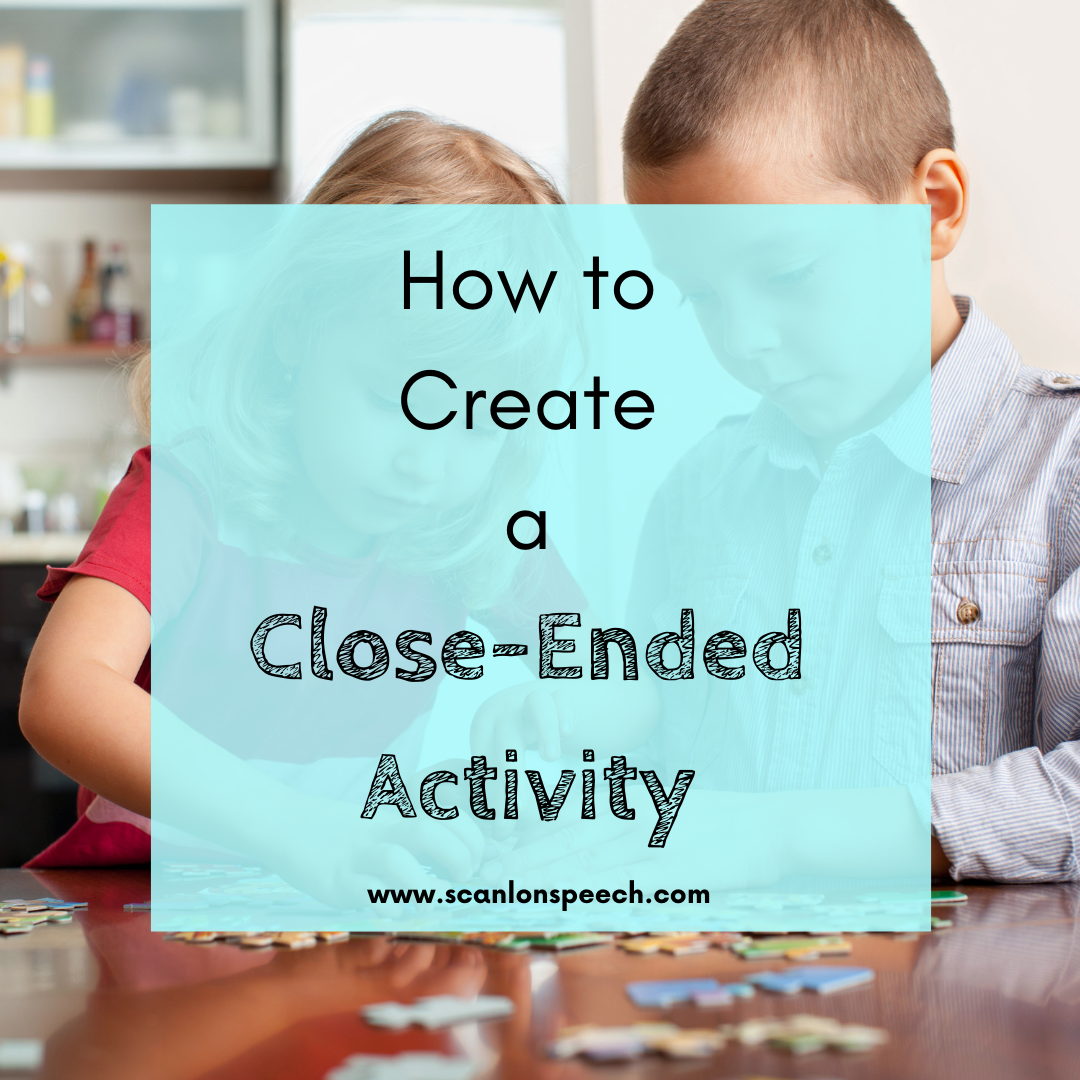Sign Up For Our E-Blast To Receive Information on our Books, Speech Therapy materials and our latest freebies!
How to Design A Close-Ended Activity

Close-ended activities are those that have an end result or a specific objective to achieve.
When all the pieces of the puzzle are in, the child will realize that the puzzle is complete. When the last page of the book is turned, the child will realize the book is finished.
These activities help build and maintain attention in young children.
In previous posts, I have shared some of my favorite close-ended activities and explained how they can help build attention skills in some children. But, how can you design a close-ended activity for a client, student, or loved one?
Designing a Close-Ended Activity
Start with the child’s interests. Individuals stay on tasks longer when they are interested in the subject matter or like a particular activity. To build your child’s attention, start with what interests him or her.
Brainstorm.
List three things that interest your child. Examples may include:
- Books (especially anything related to ladybugs)
- Puzzles (especially bright colorful ones)
- Trains (any type!)
- And many more! (Visit my blog post to see other close-ended activities)
Think about how your child plays with these toys and/or participates in the preferred activity or task.
Is it appropriate?
When reading or looking at a book, he/she sits down, points to pictures and/or labels them. Is the book targeting speech development? Is it age appropriate? Can he/she follow along? Inappropriate book reading may include mindlessly turning the pages of a book without looking at the pictures or understanding the story.
Is it repetitive?
When playing with trains, he/she pushes them through tunnels, across bridges and freely changes the sequences. Inappropriate train play may be taking the train and pushing it back and forth on the tracks while lying on the floor staring at its wheels.
Is it imaginative?
When playing with trains, he pretends to have the train stop at various destinations and stations. Imaginative or dramatic/pretend play schemes develop after the child has learned to functionally and appropriately play with toys.
Now that you have selected a toy, activity or task and have thought about how your child interacts with it, ask yourself:
“How can I create a play routine that is short, predictable, and has a definitive end?”
Perhaps when playing with trains, you give your child a destination to drive to, such as saying, “Drive the train to X stop.” The child will understand that when he/she arrives at that stop, they will have completed the trip. Many children feel a sense of pride when they successfully complete a task. Since they had such a good time, they want to repeat the experience. Have your child repeat the same play routine, and observe how they begin to remember what to do and where to go.
The same thing can be done when making a beaded necklace. Have your child put 10 beads on the string, and once they have added the 10 beads, they will have completed the necklace.
Close-ended, predictable play routines are especially helpful for children with Autism because they provide structure and comfort. It provides them with an expectation of what to do as well as a definitive end to the playtime. For more information on this, visit my blog post here, How Close-Ended Activities Improve Attention in Children with Autism.
Some children may need shorter routines to stay focused, while others with stronger attention skills can participate in longer and more complex play routines. It really just depends on your child’s own abilities!
Remember to start small with the routine, and then add on as you go!
I would love to hear your thoughts. Please feel free to comment.
- Enhance Your Speech Therapy Sessions with ‘Picky Kitty’ – A Must-Have Game for Every Speech Therapist
- Same and Different: Why Speech Therapists and Educators Should Target this Basic Concept
- New Beginnings for Scanlon Speech Therapy
- Articulation Speech Therapy: Favorite Activities, Games, and Books to Target the TH Sounds
- Articulation Speech Therapy: Favorite Activities, Games and Books to Target the L Sound
